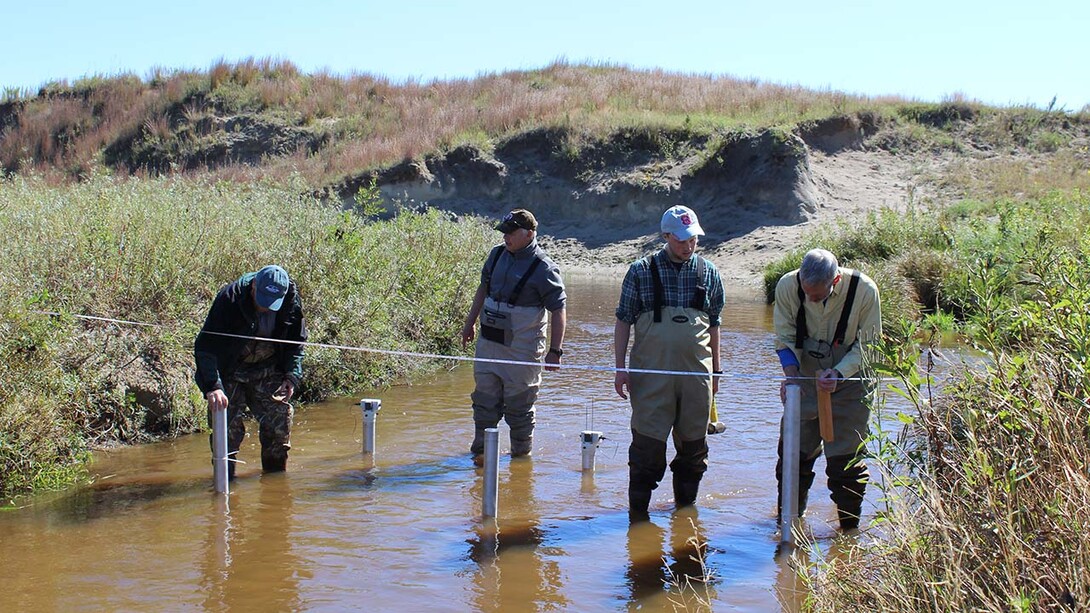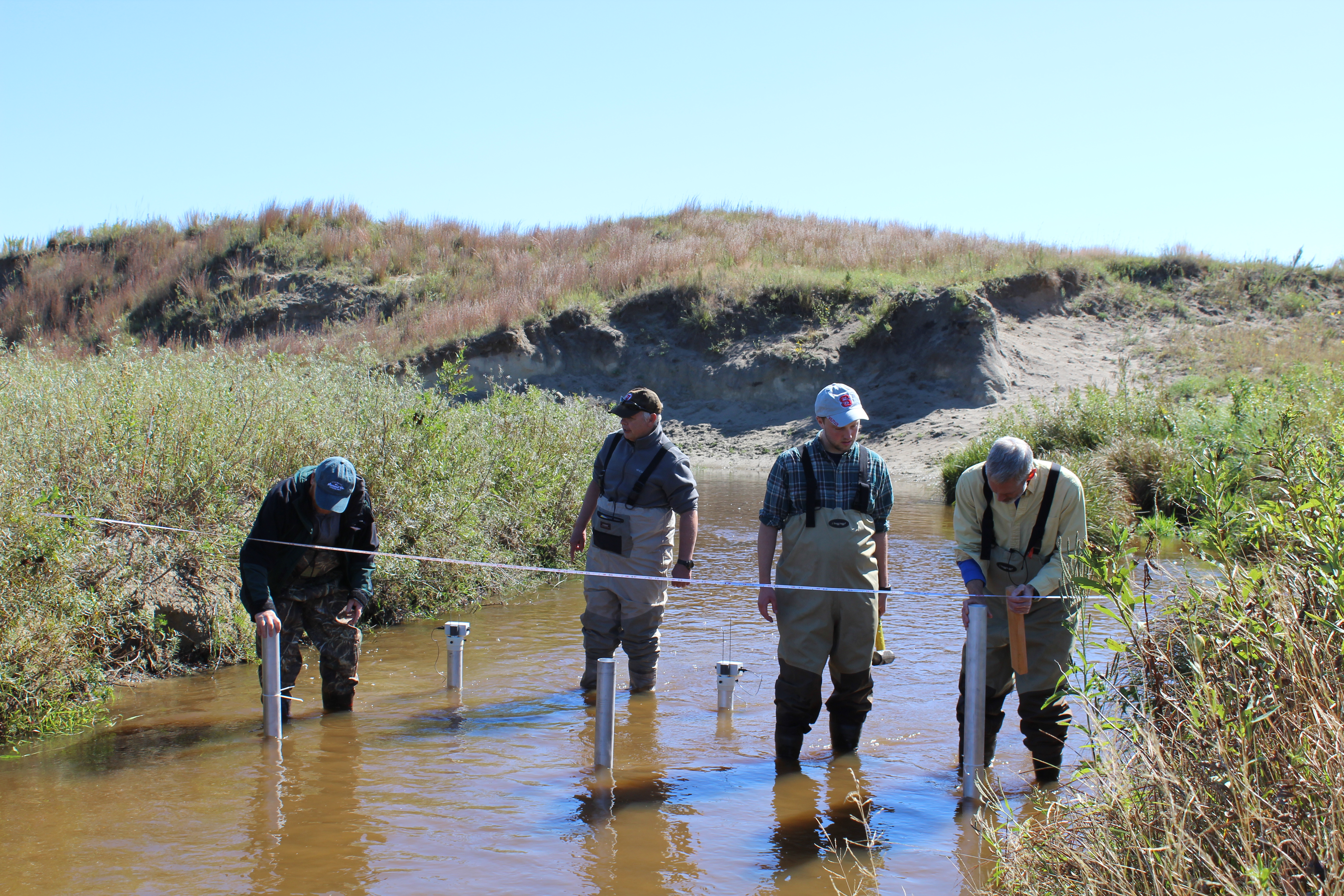
By sampling groundwater and determining its age, University of Nebraska–Lincoln researchers hope to determine whether predictions for groundwater discharge rates and contamination removal in watersheds are accurate.
If their hypothesis — that previous models overestimate how much “young” groundwater seeps into streams — proves true, then predictions of how many years it takes for contaminants to degrade or be flushed from waterways could be dramatically altered.
Troy Gilmore, groundwater hydrologist with the Conservation and Survey Division and assistant professor in the School of Natural Resources and College of Engineering at Nebraska, is leading the three-year project, funded by an $880,000 hydrologic science award from the National Science Foundation. Nebraska’s Vitaly Zlotnik, professor of earth and atmospheric sciences, and Aaron Mittelstet, assistant professor of biological systems engineering, bring modeling expertise to the project. David Genereux of North Carolina State University and Kip Solomon of the University of Utah are collaborators.
“Few studies have modeled for both groundwater discharge rate and age,” Gilmore said. “Those that did suggest that younger groundwater is a much larger component of streamflow than we have observed in our field studies.”
The researchers are collecting data along a 60-mile stretch of the Loup River in Cherry, Grant and Hooker counties. The river is situated on top of the High Plains Aquifer, one of the world’s largest aquifers, underlying about 112 million acres of eight states: Colorado, Kansas, Nebraska, New Mexico, Oklahoma, South Dakota, Texas and Wyoming.
In addition to recording groundwater flow rates at the point water enters the stream, the researchers will test for radioactive hydrogen and carbon isotopes (tritium and Carbon-14 respectively), and noble gases. Each of these traits independently provides a mean age of groundwater.
“We know the amount of tritium spiked in the 1950s and 1960s because of nuclear bomb testing,” Gilmore said. “And we know tritium decays into helium at a known rate.”
Carbon-14 also has a known decay rate, and finding it indicates water is 1,000-plus years old or older.
“We figured if researchers were going to find older groundwater seeping into streams, the Loup River sitting on top of the thickest portion of the High Plains Aquifer would be the place to find it,” Gilmore said.
By testing for multiple tracers, the researchers will be able to estimate a wide range of groundwater ages. These details added to how quickly the water comes into and exits the stream, will help them determine whether current models need to be adjusted.
“Models are constantly changing as more information becomes available,” Gilmore said. “Here, we’re expanding on field techniques to make sure we’re not missing details and then using the groundwater model to test for weaknesses in both the field work and the model. Maybe the current model will need to change; maybe it will take only one to two decades for contaminant cleanup instead of 20 to 1,000 years.”
Regardless of whether the model needs an update, the researchers are placing an emphasis on getting the information into the public’s hands.
“We want to convey the general concept of time scale and water movement to water managers, consultants and those interested in regulation,” Gilmore said.
But they also want to increase Nebraskans’ understanding of what they drink and where it comes from.
Gilmore emphasizes the connection between the state’s water resources, noting the water from the Loup River discharges into the Platte River, where the City of Lincoln pulls it for its water supply. And water from the Platte flows into the Missouri and eventually into the Mississippi River.
As the researchers build resources, including interactive online training materials, they’ll make them available on their website here.








